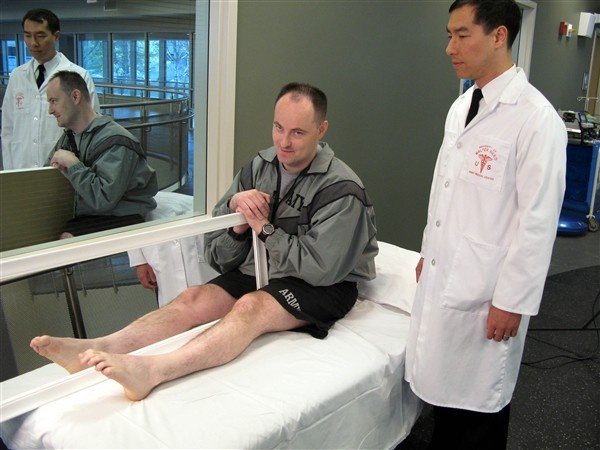What is Phantom Limb Pain?

What Is Phantom Limb Pain
When an arm or leg is amputated, many people continue to feel that the limb is still there. This vivid sensation was first described as a “phantom limb” by Mitchell (1872), and is often accompanied by excruciating pain. Phantom limb pain is defined as painful sensations perceived in the missing part of an amputated limb.
50-80% of amputee patients report experiencing phantom pain syndrome. The phantom sensation has been described as: burning, cramping, crushing, stabbing, tingling, itching, pressure, electric shock-like feeling, heat or cold, throbbing or paralysis. It is also sometimes referred to as “ghost pain” as the limb cannot be seen but is felt to be there. The pain can be intermittent or constant and can continue to occur years after the amputation.
Theory Behind Phantom Limb Pain
The main theory explaining the pathophysiology of phantom limb pain is cortical reorganization. The “plasticity” of the brain means it changes and adapts to what your body is telling it. Neuroimaging studies have shown that the somatosensory and motor cortex are malleable. When ‘remapping’ occurs, it can lead to a chaotic output which might be interpreted as both paraesthesia and pain by higher brain centres.
One contributing factor might be a mismatch between motor output and visual feedback from the arm, which may add to the chaotic output. While your eyes tell you that the limb is no longer there, the nerves that send signals to the limb remain active. This gives the sense that the limb is in a particular position. It has been found that the magnitude of phantom pain correlates with degree of “remapping” of the brain.
How Phantom Limb Pain Affects The Patient
As well as the primary issue of pain being very disabling, phantom limb pain is dangerous because it is one of the main causes of distress and depression among amputees. It is therefore an important condition to understand. It can lead to low self-esteem and frustration due to the inability to control a limb that is not there. If depression becomes too severe it can lead to suicidal intent which is why management is vital.
Post amputation pain management has included many different modalities as it has shown to be a difficult condition to treat. Treatment methods range from unproven but safe procedures like hypnosis, to dangerous and invasive brain surgery.
Some treatments offered are: analgesics, anticonvulsants, antidepressants, muscle relaxants, anaesthetic substances, transcutaneous electrical nerve stimulation, cognitive behavioural techniques, and acupuncture.
No one treatment has been shown to be fully effective. Mirror therapy has been introduced as a safe, non-intrusive and easy way for patients to try to manage phantom limb sensations themselves.
Learn How Does Mirror Therapy Help To Relieve Phantom Limb Pain here.